Morning Update: Coke’s ‘one brand’ confusion; Google faces EU charge over Android ‘abuse of dominance’; YouTube: ‘better returns than TV’
Quartz: Coca-Cola may have just hit on its worst marketing idea since New Coke
Dieters, diabetics, calorie counters, caffeine avoiders: Beware.
Coca-Cola is launching a new soft drink packaging that essentially obscures the difference between various kinds of Coke. In this new branding scheme, unveiled at an event in Mexico City on April 19, a Diet Coke can appears predominantly red, as do cans of Coke Zero and Coke Life—with just a sliver of their original colors peeking through one side.
Coke claims that this will make their products easier to distinguish. “We are taking the next step towards full adoption of the “One Brand” strategy, uniting the Coca-Cola family under one visual identity and making it even easier for consumers to choose their Coca-Cola with or without calories, with or without caffeine,” said chief marketing officer Marcos de Quinto in a press release.
BBC: Google faces EU charge over Android ‘abuse of dominance’
Google has been issued formal antitrust charges over claims that it abuses the dominant position of its Android operating system. The European Commission sent a statement of objections to the tech firm, alleging that it has breached EU competition law.
Google is accused of placing onerous requirements on firms using Android and stifling competition. It said Android was “good for competition and good for consumers”. Kent Walker, Google’s senior vice president and general counsel, said: “Android has helped foster a remarkable and, importantly, sustainable ecosystem, based on open-source software and open innovation. We look forward to working with the European Commission.”
You Tube: YouTube claims it delivers ‘better returns than TV’ in fresh attack on broadcasters
YouTube has claimed new research shows 77 per cent of campaigns on its video site have “a higher return on investment than TV”, but broadcasters insisted it was “no surprise” because brands spend “relatively low” sums with YouTube.
YouTube cited campaigns for several brands, including for chocolate-maker Mars, which got ” double the ROI of TV for each pound spent reaching the main shopper”, and yoghurt company Danone, which had “an ROI two to three times higher for YouTube than TV for every euro spent”.
For three years, a popular Chinese reality TV show about celebrity fathers and their kids has drawn massive revenues from sponsorships and advertising. Local dairy giant Yili already committed $77 million to sponsor the next season of “Dad, Where Are We Going?” But censors are cracking down, and the popular show has reportedly been canceled.
China’s media regulator just banned reality TV shows featuring celebrity children, according to the official Xinhua news agency. The State Administration of Press, Publication, Radio, Film and Television, or SAPPRFT, said the move will keep children out of the spotlight so they can “enjoy the childhoods they are entitled to.”
Ad Age: Ad Buying on Facebook Just Got More TV-Like
Broadcast advertisers will now find familiar terminology when making video ad buys on Facebook.
That’s because Facebook wants to make ad buying on its platform more TV-like for broadcast advertisers. The company said Wednesday that target rating point video buys on Facebook or Instagram can now leverage day-parting and Nielsen DMA targeting, two features that were previously unavailable. DMA targeting allows marketers to home in on a specific local television market area while day-parting delivers advertisements during specific parts of the day.
Ad Week: What Experts Are Saying About the Impact of Digital on TV Advertising
Why isn’t TV advertising more like digital? Because with each passing day, TV advertising becomes more and more like digital. The reason is data. By matching massive, representative panels of high-quality datasets, it’s possible to measure the behaviors of people exposed to TV advertising and use these measures to optimize future campaigns. I know because this is what we do every day at Simulmedia—we use data, software and science to make TV accountable, like digital.
Here are some of the big picture questions these experts addressed during the event (or skip to the end to watch video highlights).
Neil French, one of the most revered figures in Asian advertising of the last 30 years, has entered the debate over sexism in adland by attacking a post by prominent ad exec turned gender equality activist Cindy Gallop.
The always outspoken French, who left his role as worldwide creative director of WPP in 2005 after remarks he made about female creatives, suggested in a post on Facebook that Gallop had overblown an account of sexual harassment she suffered one year at Cannes. See the full post below:
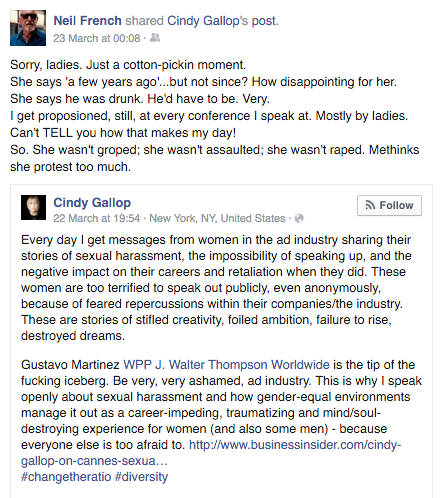



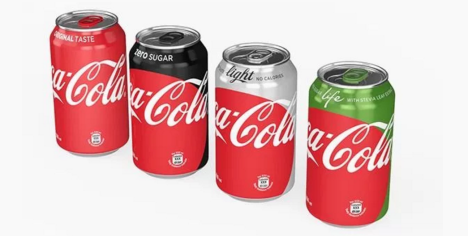

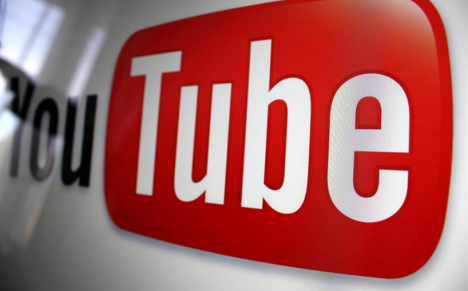

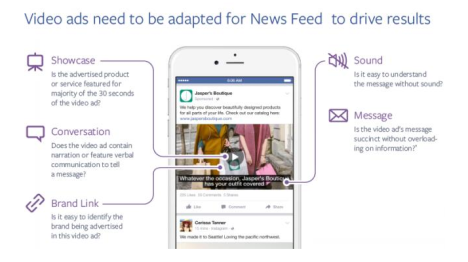

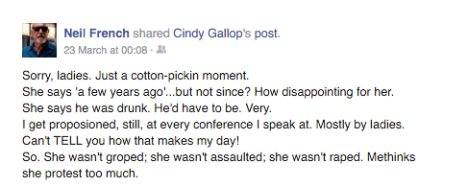

I like the new Coke branding, if you have issues picking out your favourite type – that says more about you than the packaging!
User ID not verified.